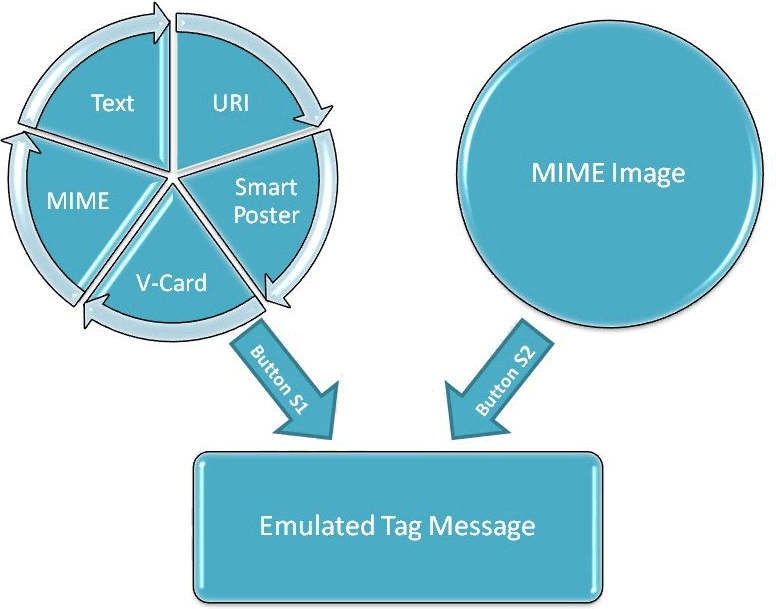SLOA208B November 2014 – March 2019 TRF7970A , TRF7970A
-
NFC card emulation using the TRF7970A
- Trademarks
- Terms, Definitions, and Symbols
- 1 Introduction
- 2 Card Emulation
- 3 Configuration and Commands for Type 4 Tag Platforms
- 4 Hardware Description
- 5 Card Emulation Firmware Example
- 6 Quick Start Guide
- 7 Operational Overview
- 8 Card Emulation Interoperability Results
- 9 Conclusion
- 10 References
- Revision History
5.2.3 Emulation of Different RTDs
The NFC_run function sets the transceiver to listening mode, and it waits for a polling command. When a reader/writer is presented, it goes through the protocol activation and anticollision procedures to establish a connection. After the tag is selected, the state machine is in the NFC_DATA_EXCHANGE_PROTOCOL state, and the firmware emulates a tag based on the selected RTD type (default is Text RTD).
When no NFC device is present, the firmware checks if button S1 or button S2 has been pressed. When button S1 is pressed, the firmware cycles between the emulation of five RTD types: Text, URI, Smart Poster, V-Card, and MIME. The MIME RTD is an example of a Bluetooth handover application.. When button S2 is pressed, the emulated RTD becomes a stored MIME image. The MIME image is 3597 bytes, and it can be overwritten by NFC enabled reader/writers to hold any NDEF-compatible RTD that fits within the 3597-byte size constraint. The RTD that is emulated on button S2 is restored to the original MIME image when the board is reset or power is cycled. Figure 13 shows the process.
 Figure 13. Toggling Between RTD Types
Figure 13. Toggling Between RTD Types